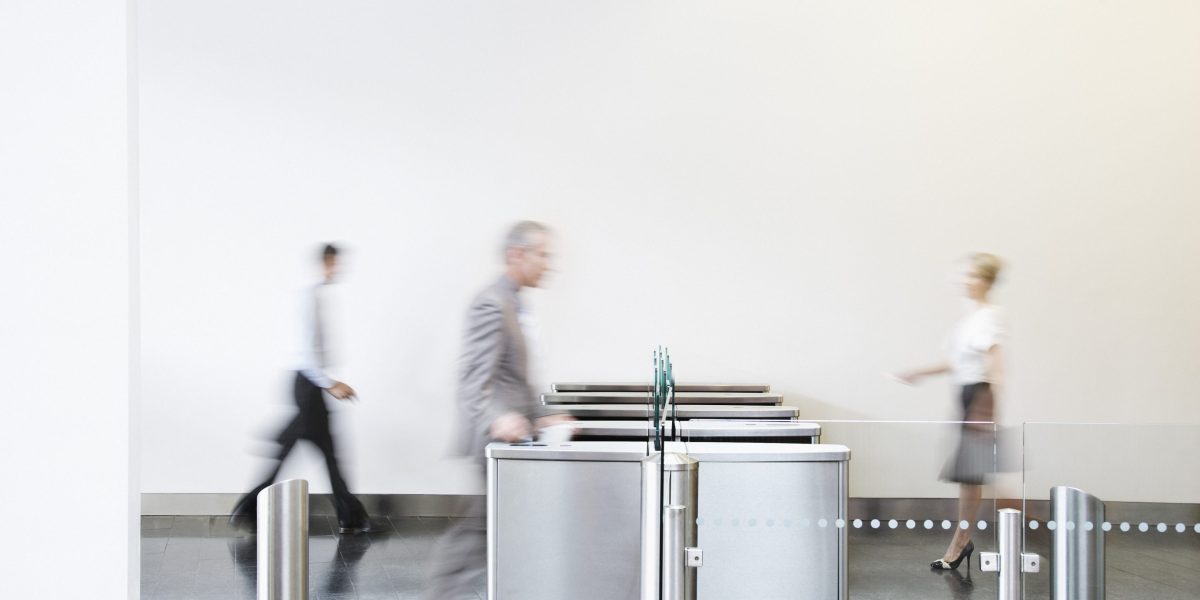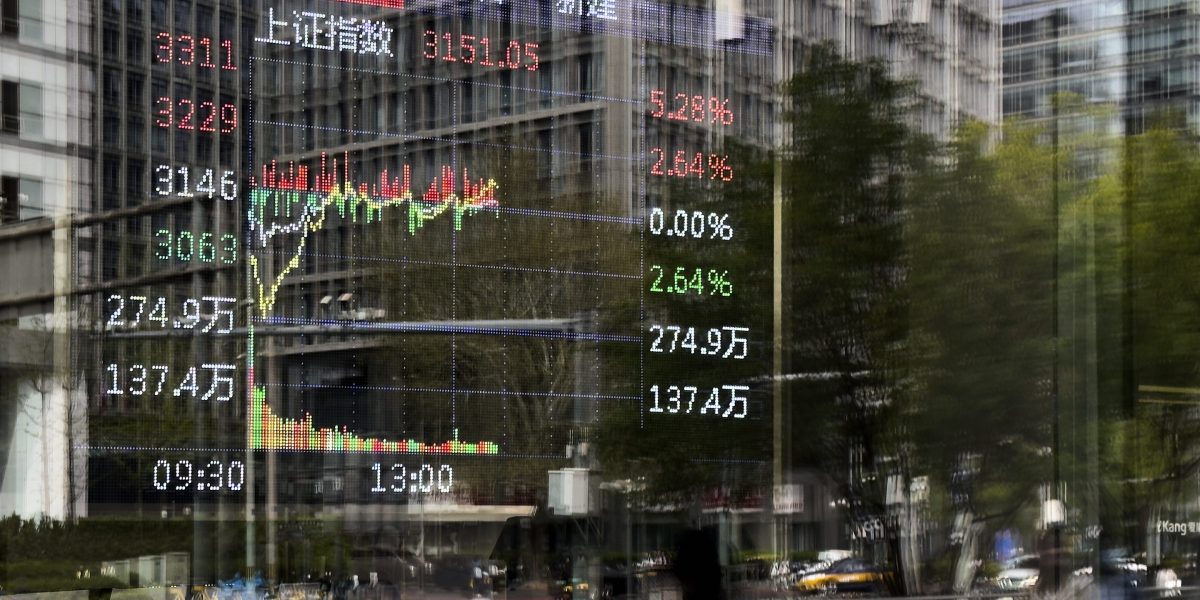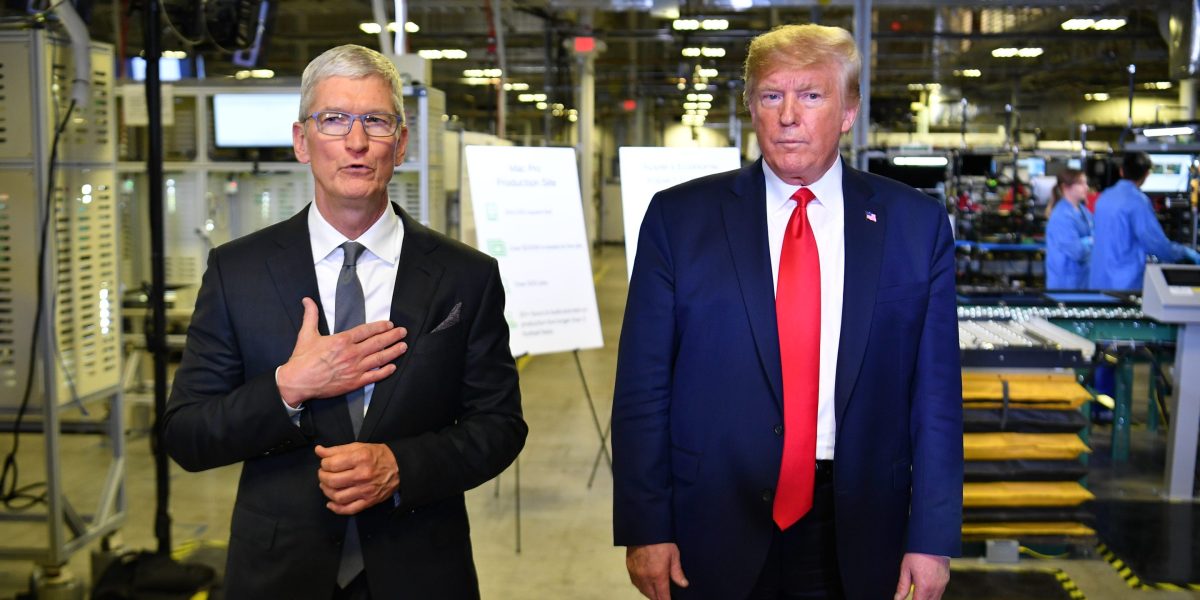- Apple’s market cap has plummeted by $700 billion as its stock takes a beating in the aftermath of Trump’s “liberation day” tariffs. The company is uniquely exposed to Trump’s tariffs on China, as it produces most of its moneymaker iPhones in the country. If CEO Tim Cook can’t secure tariff exemptions for the company, as he did during the first Trump administration, the blow could be “a complete disaster,” according to Wedbush Securities analysts.
Apple’s market cap has collapsed by $700 billion in the days following Trump’s “liberation day” as investors realized just how much new tariffs will hit the tech giant’s biggest moneymaker.
In the three days after Trump announced new eye-popping tariffs on U.S. trading partners, Apple stock plummeted 19%, making it the worst drop over the same period since 2001. Since April 2, Apple’s stock rout has chipped away about $700 billion from its market cap, dropping it to $2.6 trillion as of Monday from about $3.3 trillion last week. From $223 per share last week, Apple’s share price, as of Tuesday, had fallen to $175, and was down 3% in afternoon trading.
The stock rout comes as analysts warn the company’s biggest moneymaker, the iPhone, is at major risk from President Trump’s mega-tariffs because of its supply chain in Asia. While Apple secured exemptions when Trump instituted tariffs during his first administration, it’s unclear if CEO Tim Cook will be able to secure the same treatment this time.
“The tariff economic Armageddon unleashed by Trump is a complete disaster for Apple given its massive China production exposure,” Wedbush Securities analysts led by Dan Ives wrote in a Sunday note. “In our view, no US tech company is more negatively impacted by these tariffs than Apple with 90% of iPhones produced and assembled in China.”
Despite Trump’s plan to use tariff pressure to bring more manufacturing to the U.S., analysts estimate moving even one-tenth of Apple’s supply chain to the U.S. would cost $30 billion and take three years. If Apple passes increased costs to consumers, the price of an iPhone could skyrocket.
The price of Apple’s cheapest iPhone 16 could jump to $1142 from its announced price tag of $799, Reuters reported, citing analysts at Rosenblatt Securities. The price of an iPhone 16 Pro Max with 1 terabyte of storage could jump from $1,599 to about $2,300, the analysts estimated.
Apple did not immediately respond to Fortune‘s request for comment.
The current tariffs at 32% for Taiwan and 54% for China would be especially “devastating” to Apple and its costs, the analysts wrote. Trump also said Tuesday he would follow through with the additional tariffs of 50% he threatened against China for retaliating against the United States’ initial tariff hikes last week. If instituted at midnight as planned, cumulative tariffs on China would be around 104%.
Apple has diversified its supply chain away from China in recent years, but Wedbush analysts estimate that along with most iPhones, 50% of Mac products and 75% to 80% of iPads are still made in China.
The tech giant has also shifted production to Vietnam, including about 90% of its wearables like the Apple Watch, according to Evercore ISI. Yet, Apple’s imports to the U.S. from Vietnam will, as of now, also be hit with a 46% tariff.
Apple now produces about 1 in 7 iPhones, or $14 billion worth of the products, in India, Bloomberg reported. Imports from India still face a tariff of 26%.
This story was originally featured on Fortune.com
Source link


 Entertainment8 years ago
Entertainment8 years ago
 Politics8 years ago
Politics8 years ago
 Entertainment8 years ago
Entertainment8 years ago
 Entertainment8 years ago
Entertainment8 years ago
 Tech8 years ago
Tech8 years ago
 Tech8 years ago
Tech8 years ago
 Tech8 years ago
Tech8 years ago
 Politics8 years ago
Politics8 years ago






